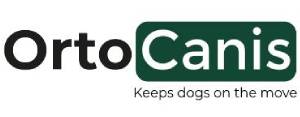The proprioceptive system is always assessed as part of a physiotherapy examination (musculoskeletal or neurological) in order to have a benchmark reference and some guidelines with which to compile a treatment plan. Sometimes the same techniques that we use to assess the animal are used later for the rehabilitation process.
Postural Responses
- Positioning reaction or conscious proprioception
- Put the dorsal surface of the limb in contact with the floor. The animal should immediately revert to the normal position.
- Maintain the limb of the animal in abduction or adduction. In this case the animal should also immediately revert to the initial position.
- Put a piece of paper under the dog’s paws. Move the sheet sideways for thoracic limbs and in a caudolateral direction for pelvic limbs. Upon feeling the movement, the animal should re-position the limb correctly.
Hemistand
- Lift the limbs of one half of the body and move the animal towards the opposite side of the body in order to see if it can maintain its balance.
- In the case of musculoskeletal injuries it is also possible to assess the affected limb by lifting the opposite limb or one of the forelimbs in order to evaluate the way the animal reacts in terms of balance (unistanding)
Hemiwalk
- This is exactly the same exercise as the hemistand exercise, except the dog has to move on both limbs.
Hopping test
- Support the animal so that three of its four limbs are on the ground, and move it sideways. It should hop.
Wheelbarrow test
- Support the animal’s pelvis and make it move on its thoracic limbs. Keep the dog’s head up when doing this test so that it does not look to see where it is putting its paws.
Extensor postural thrust reaction test
- Hold the animal in an upright position and lower it gradually. When its hind legs touch the floor, it will extend them caudally in a walking motion, anticipating movement.
Visual and tactile placing
- Move the animal towards the edge of a table until it touches the edge. It should place its limb on the table instantly. We are assessing visual and proprioceptive sensitivity. The exercise should be repeated with the animal’s eyes covered in order to assess tactile and proprioceptive sensitivity.
Stationary and Dynamic Equilibrium
The animal’s balance can be assessed by stimulating some of the postural reactions mentioned above or by destabilising the animal when it is stationary and when it is walking.
While the animal walks gently push it towards the sides to see how it reacts. If the animal’s balance is correct it will keep walking in a straight line without changing its state or its pace.
Coordination
Coordination can be assessed using circles, figures of eight, inclines, descents, changes in speed and different areas with small obstacles in between.
Ortocanis News Team

